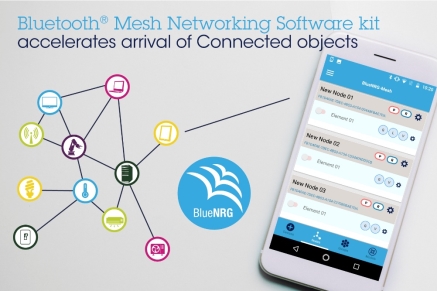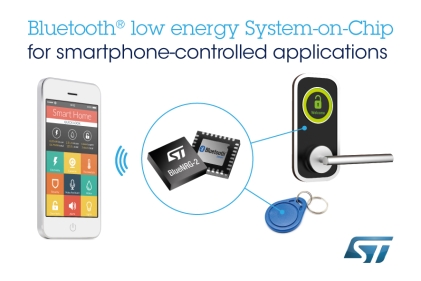Anyone with a TV or computer probably knows that the Internet of Things is a network that enables "things" to communicate with each other without human intervention. Before the Internet of Things, connected devices required humans to generate or process information. Smartphones, laptops, and desktops are all examples of personal connected devices.
The IoT extends far: IoT-enabled devices, such as smart personal devices, smart home devices, smart cars, and even smart city facilities, can sense, process, store, and act accordingly. Smart pill boxes can monitor whether patients take their medications on time, remind them to take their medications, notify family members to take care of patients taking their medications on time, and even buy medications that are running low in advance. Smart locks can open and lock doors with a mobile phone, monitor all activities, set access time periods, and alert owners to illegal entry.
You probably already have or are using several IoT devices, and according to a research report by Stastita (1), the total number of IoT devices is expected to exceed 75 billion by 2025, far exceeding the 8.1 billion people on Earth predicted by the United Nations by that year (2). You can see why IoT is likely to be the biggest growth area for technology companies. IoT devices will make our lives safer and more comfortable, and help optimize the use of resources.
The IoT architecture is the window through which this longer value chain interacts with the outside world. IoT devices are also the primary interface for human-machine interaction, so form factor and product functionality are key factors in making IoT products a hit.
The typical IoT architecture includes devices, gateways, cloud services, and application software. In this article, we focus on communication connection technologies and IoT devices, especially personal wearable devices.
Personal IoT Device Specifications
Activity Detection
Physical activity recognition and pedometer are the most common functions of wearable devices. These functions are completed by an accelerometer, which is one of the most widely used sensors and is standard in almost all personal devices. After years of development, accelerometers have become very advanced, from simple acceleration detection to many advanced motion detections and direct output of sensor data.
For example, STMicroelectronics’ LIS2DW12 accelerometer can detect 6D orientation, wake-up, free fall, and click functions. The sensor’s detection noise mode is configurable, choosing between detection accuracy and power consumption, and even has automatic sleep and wake-up functions.

In order to improve the detection accuracy and functionality of wearable electronic devices, gyroscopes need to be used in conjunction with accelerometers. Gyroscopes are angular velocity sensors. In the past, gyroscopes consumed a lot of power and had limited application range, making them unsuitable for use in small battery-powered personal devices. However, the IMU inertial measurement unit, which integrates gyroscopes and accelerometers on a single chip, not only consumes less power, but also has many advanced features, such as finite state machines, custom gesture recognition, smart FIFO memory, and external sensor interfaces. Data processing is done inside the module, without occupying microcontroller computing resources. STMicroelectronics' LSM6DSO is such an IMU product.
Compass and direction detection
The compass provides direction detection to the user and helps with drone navigation. Magnetometers work in conjunction with accelerometers and gyroscopes to enable indoor navigation. Magnetometers are also used in some home automation solutions, such as door open or closed detection.
Height measurement
Altimeters can enhance the functionality of pedometers, for example, helping rock climbers measure height above the ground and detecting the location of floors for indoor navigation. Wearable barometric pressure sensors are used to detect atmospheric pressure and eventually to measure altitude.
The air pressure sensor needs a vent so that air can enter the membrane and detect the air pressure. Water and chemicals can easily enter the sensor unit through the vent and contaminate the internal structure. Therefore, a pressure sensor that can be used for swimming, outdoor sports and the marine industry and can prevent pollution from chemicals such as chlorine and bromine is needed. The LPS33HW is a sensor that meets these requirements. It has an O-ring and 10 Pa waterproof (up to 90 meters deep) capability to prevent pollution from chemicals such as chlorine, bromine, and salt.
Environmental Perception
Environmental awareness technology detects and identifies the environment based on the audio input data from the microphone. By measuring the sound, the device can identify whether the user is in a shopping mall, stadium or conference room. By identifying the environment, the settings of the connected mobile phone can be directly configured. The microphone array can achieve echo cancellation, beam forming and sound source localization to improve the detection accuracy of the microphone. Important parameters of the microphone include SNR (signal-to-noise ratio), AOP (acoustic overload point) and power consumption. Microphones are divided into two categories: analog output and digital output. According to the position of the sound hole, the microphone is divided into upper sound hole and lower sound hole (mobile phone microphone).
connect
It is important to note that it is the connectivity technology that turns a device into an IoT device. Connectivity technology enables devices to connect to the IoT cloud through a mobile phone or gateway, or directly to the infrastructure. The traditional way IoT devices are connected is through Wi-Fi, Bluetooth, and cellular network technologies. However, the emergence of low-power radio frequency technology has expanded the range and functionality of IoT devices.
Bluetooth Low Energy [BLE] is a wireless personal area network [WLAN] technology designed to advance innovation in medical, health, fitness, security and home automation applications. Compared with traditional Bluetooth and Wi-Fi technologies, BLE has very low power consumption and the ability to connect devices to mobile phones. The carrier frequency of BLE is 2.4Ghz, which belongs to the free ISM band worldwide. BLE Mesh is a software solution that connects multiple BLE devices in a Mesh network. The emergence of BLE Mesh solutions allows devices to access the network as usual even if they are not in direct range of the network.

STMicroelectronics' BlueNRG-2 is an ultra-low-power BLE 5.0 certified system-on-chip that can seamlessly connect to sensors, support Bluetooth Privacy 1.2 and Secure Connection 4.2, 8dbm output power, and support reliable BLE links with IoT devices. In addition, it also supports the standard's fully compliant SIG BLE mesh.

Low-power wide-area network (LPWAN) technology is another disruptive technology in the field of network connectivity. It can communicate over a distance of up to several kilometers with very low power consumption, and the power source is a non-rechargeable coin battery. Sigfox is an LPWAN technology that provides global cloud services and long-distance connectivity with extremely low power consumption. Sigfox devices access the network for free around the world without having to sign any separate agreements with network operators or pay roaming charges. LPWAN technology operates in the frequency band below 1 GHz. There is no unified frequency band standard in the world (Bluetooth is 2.4Ghz), so LPWAN devices use different frequency bands in different countries. To solve this problem, Sigfox has launched a new feature called Monarch to identify radio services and manage radio frequency changes according to local regulations.
STMicroelectronics has introduced a unique solution in the market, combining BLE and Sigfox radio S2-LP in one. This dual radio solution establishes long-range connectivity via Sigfox and smartphone BLE. The smartphone connects to the Sigfox device with user interface [UI], over-the-air firmware updates [OTA], direct configuration and control capabilities.
Edge Intelligence
Artificial intelligence and machine learning have evolved into the backbone computing technologies of the Internet of Things. Artificial intelligence uses natural computing methods that simulate the characteristics of nature to solve complex problems; machine learning refers to technologies that enable machines to recognize underlying patterns, make predictions and make recommendations by analyzing data. IoT cloud computing can implement these algorithms and technologies.
As the number of IoT devices grows exponentially, the amount of raw data sent from sensors to the cloud has increased significantly, resulting in a significant increase in the demand for data bandwidth and cloud computing capabilities for cloud connections. When certain analysis processes are moved down to the vicinity of sensor nodes or edge endpoints, artificial intelligence can be used to effectively analyze and process sensor data. Edge computing can protect data privacy and security and reduce network bandwidth and cloud computing requirements. Edge computing means performing intelligent sensing and processing processes at the node, so it is very important to choose these devices. Intelligent nodes analyze data, run sensor algorithms, infer and identify the environment, and upload data to the cloud for subsequent processing.
Developing IoT solutions
As mentioned earlier, a typical IoT architecture consists of devices, gateways, cloud services, and IoT applications.
Powerful IoT solutions include not only innovative devices, but also open source hardware and software reference designs, vertical application solutions, and partnerships with cloud service providers. Successful IoT solutions also require collaborative development by all stakeholders on the platform.
Previous article:Chirp: Arm-based technology will help development
Next article:Analyzing the dangers and opportunities of the e-cigarette industry
- Popular Resources
- Popular amplifiers
- e-Network Community and NXP launch Smart Space Building Automation Challenge
- The Internet of Things helps electric vehicle charging facilities move into the future
- Nordic Semiconductor Launches nRF54L15, nRF54L10 and nRF54L05 Next Generation Wireless SoCs
- Face detection based on camera capture video in OPENCV - Mir NXP i.MX93 development board
- The UK tests drones equipped with nervous systems: no need to frequently land for inspection
- The power of ultra-wideband: reshaping the automotive, mobile and industrial IoT experience
- STMicroelectronics launches highly adaptable and easy-to-connect dual-radio IoT module for metering and asset tracking applications
- This year, the number of IoT connections in my country is expected to exceed 3 billion
- Infineon Technologies SECORA™ Pay Bio Enhances Convenience and Trust in Contactless Biometric Payments
- LED chemical incompatibility test to see which chemicals LEDs can be used with
- Application of ARM9 hardware coprocessor on WinCE embedded motherboard
- What are the key points for selecting rotor flowmeter?
- LM317 high power charger circuit
- A brief analysis of Embest's application and development of embedded medical devices
- Single-phase RC protection circuit
- stm32 PVD programmable voltage monitor
- Introduction and measurement of edge trigger and level trigger of 51 single chip microcomputer
- Improved design of Linux system software shell protection technology
- What to do if the ABB robot protection device stops
- Allegro MicroSystems Introduces Advanced Magnetic and Inductive Position Sensing Solutions at Electronica 2024
- Car key in the left hand, liveness detection radar in the right hand, UWB is imperative for cars!
- After a decade of rapid development, domestic CIS has entered the market
- Aegis Dagger Battery + Thor EM-i Super Hybrid, Geely New Energy has thrown out two "king bombs"
- A brief discussion on functional safety - fault, error, and failure
- In the smart car 2.0 cycle, these core industry chains are facing major opportunities!
- The United States and Japan are developing new batteries. CATL faces challenges? How should China's new energy battery industry respond?
- Murata launches high-precision 6-axis inertial sensor for automobiles
- Ford patents pre-charge alarm to help save costs and respond to emergencies
- New real-time microcontroller system from Texas Instruments enables smarter processing in automotive and industrial applications
- Any port generates a square wave with half duty cycle
- [RISC-V MCU CH32V103 Evaluation] USB device slave mode test
- Want to learn about switching power supplies? Start by reading this book!
- Practical Application Skills of DC Motors
- Minimalist USB TYPE-C PD3.0/3.1 spoof trigger solution
- [Synopsys IP Resources] Using the ARC SEM130FS processor to meet the safety protection requirements of new automotive SOCs
- 【MicroPython】Using MCO as a clock
- Good news! Owning an ultra-high performance UXR series oscilloscope is no longer a dream!
- Gallium Nitride—Not Just for Defense Anymore
- Solution design: an electronic smart lock with integrated Wi-Fi



 TC52N2538ECTRT
TC52N2538ECTRT












 京公网安备 11010802033920号
京公网安备 11010802033920号